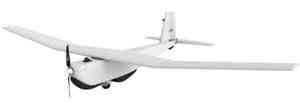CA innovators lead on tech surveillance
by James Poulos | June 10, 2014 3:30 pm
 Some of California’s lesser-known players in tech have seized the initiative in shaping the nation’s surveillance culture.
Some of California’s lesser-known players in tech have seized the initiative in shaping the nation’s surveillance culture.
Many Americans are familiar with the Taser, a nonlethal device used by law enforcement to shock and immobilize. Fewer are aware that the Taser is the creation of a company with the same name — or that the Taser corporation runs a division devoted to wearable and cloud-powered monitoring devices. Known as Evidence.com[1], the division works closely with police departments across the country to facilitate data management, including data obtained in the course of “evidence gathering.”
From the sound of its sales pitch, Evidence.com doesn’t put civil liberties front and center. After all, it promises[2] law enforcement agencies the ability to “capture anything anywhere.”
More technology, more liberty?
But that’s where ex-Facebook and Google Maps impresario Bret Taylor comes in. Taylor’s latest move finds him joining the board of Taser as an independent director — and instead of giving the impression that he’s selling out to Big Surveillance, he’s delivering the opposite message. In a statement[3] reported by TechCrunch, Taylor specifically makes the case for better civil liberties through enhanced law enforcement technology.
“Taser is applying technology to important social issues that I care deeply about,” he said. “This is an important opportunity to use technology to protect civil liberties. I believe Taser is poised to revolutionize the public safety space with enhanced transparency from body-worn camera technology while leveraging the cloud to manage the massive data being generated by wearable cameras and sensors. I’m thrilled to be joining the Taser board.”
Momentum for body cameras has grown recently, especially in Los Angeles, where Police Commissioner Steve Soboroff has made the feature a centerpiece[4] of his approach to fighting crime and reducing officer abuse. In April, the L.A. Police Commission found itself lecturing[5] the LAPD in the wake of discoveries that officers had tampered with in-car recording devices. In addition to transparency and cloud usage, Taylor is poised to confront stubborn, if not universal, resistance to round-the-clock self-monitoring by police forces.
Opening the floodgates for drones
If Google and Facebook are relatively well-known California companies setting the tone for surveillance in today’s society, there’s almost no name recognition surrounding an equally important firm — AeroVironment of Monrovia in the San Gabriel Valley. Although its tagline[6] is “Human Power,” AeroVironment is in the business of manufacturing drones.
 And AeroVironment’s Puma drone is among the first approved by the Federal Aviation Administration for commercial flight over land, a game-changing development that signals the government’s changing attitude toward the technology. Although approved last summer, the drone’s status was only recently revealed by the FAA. The Puma will patrol the region surrounding Alaska’s Prudhoe Bay, reports[7] the Associated Press, taking 3D pictures of inaccessible areas as part of an environmental and business effort conducted by the BP oil company.
And AeroVironment’s Puma drone is among the first approved by the Federal Aviation Administration for commercial flight over land, a game-changing development that signals the government’s changing attitude toward the technology. Although approved last summer, the drone’s status was only recently revealed by the FAA. The Puma will patrol the region surrounding Alaska’s Prudhoe Bay, reports[7] the Associated Press, taking 3D pictures of inaccessible areas as part of an environmental and business effort conducted by the BP oil company.
Regulators and drone industry lobbyists both acknowledge it may be years before a full-fledged drone policy takes shape in Washington. Nevertheless, public and private sector players are emphasizing that the future, for all intents and purposes, is now. Transportation Secretary Anthony Foxx told the AP that the Prudhoe Bay project is an “important step toward broader commercial use of unmanned aircraft. The technology is quickly changing, and the opportunities are growing.”
Because the Puma drone was created and first used as a military craft, the government’s comfort level with AeroVironment’s limited commercial venture is relatively high. Innovators itching to put drones to broader use, however, are ready to push the FAA for more concessions — and to jump the gun if need be. One youthful entrepreneur, GauravJit Singh, recently launched[8] one of his DroneCast advertising drones without explicit FAA approval.
- Evidence.com: http://www.evidence.com/
- promises: http://www.evidence.com/product-family/
- statement: http://techcrunch.com/2014/06/09/taser-bret-taylor/
- centerpiece: http://calwatchdog.com/2014/04/21/momentum-grows-for-police-body-cameras/
- lecturing: http://www.scpr.org/news/2014/04/15/43524/la-police-commission-grills-lapd-over-officers-who/
- tagline: http://www.avinc.com/
- reports: http://www.sfgate.com/news/politics/article/FAA-OKs-commercial-drone-flights-over-land-5541268.php
- launched: http://www.nbcphiladelphia.com/news/local/Drone-Advertising-Flies-Into-Philly-257045341.html
Source URL: https://calwatchdog.com/2014/06/10/ca-innovators-lead-on-tech-surveillance/